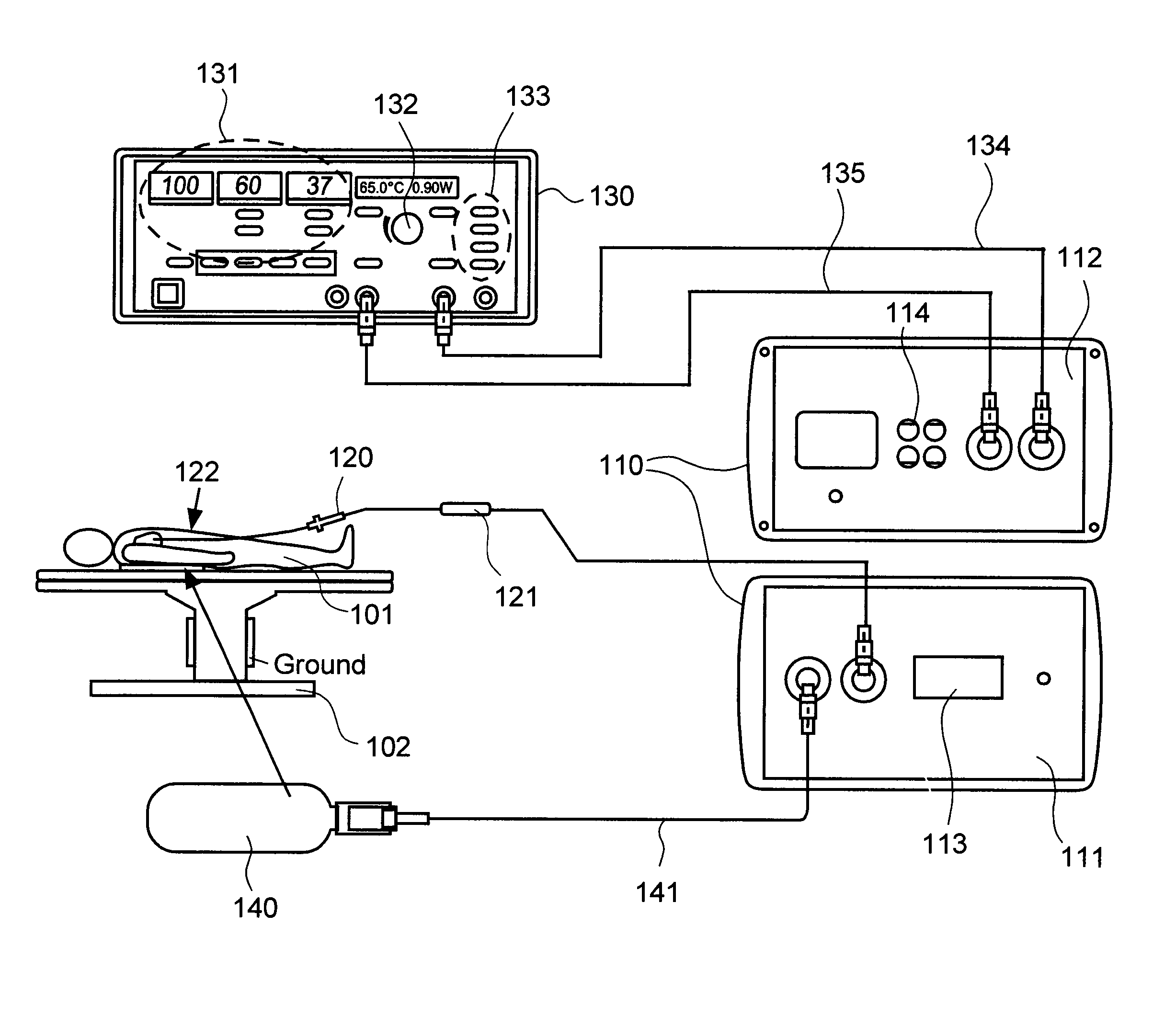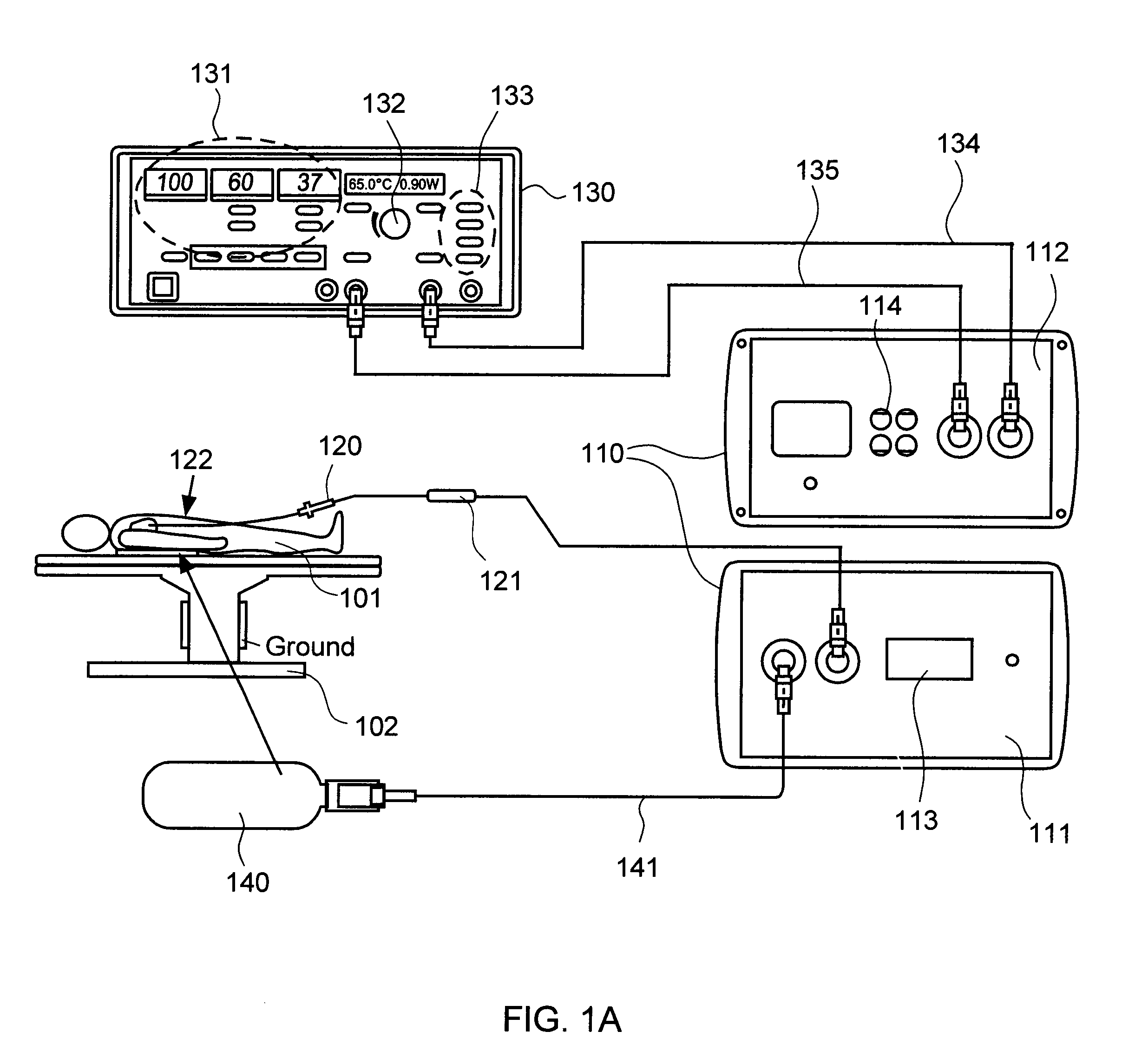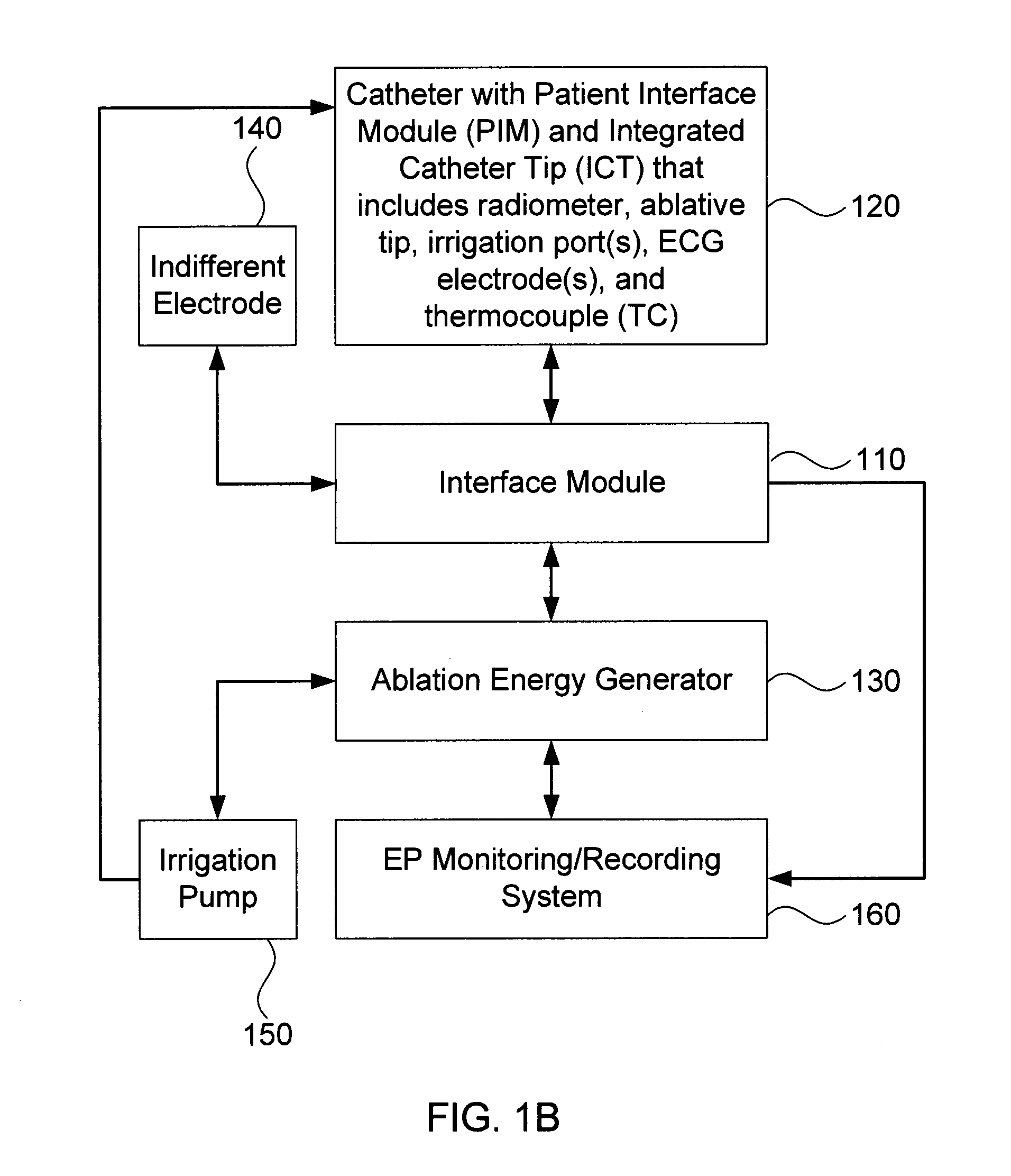Systems and methods for radiometrically measuring temperature during tissue ablation
a technology of radiometric measurement and tissue ablation, which is applied in the field of systems and methods for measuring temperature during tissue ablation, can solve the problems of obscuring any useful information about clinicians having no useful feedback regarding the temperature of the tissue, so as to achieve more accurate information about the quality of the lesion
- Summary
- Abstract
- Description
- Claims
- Application Information
AI Technical Summary
Benefits of technology
Problems solved by technology
Method used
Image
Examples
Embodiment Construction
[0029]Embodiments of the present invention provide systems and methods for radiometrically measuring temperature during ablation, in particular cardiac ablation. As noted above, commercially available systems for cardiac ablation may include thermocouples for measuring temperature, but such thermocouples may not adequately provide the clinician with information about tissue temperature. Thus, the clinician may need to make an “educated guess” about whether a given region of tissue has been sufficiently ablated to achieve the desired effect. By comparison, calculating a temperature based on signal(s) from a radiometer is expected to provide accurate information about the temperature of tissue at depth, even during an irrigated procedure. The present invention provides a “retrofit” solution that includes an interface module that works with existing, commercially available ablation energy generators, such as electrosurgical generators. In accordance with one aspect of the present inven...
PUM
 Login to View More
Login to View More Abstract
Description
Claims
Application Information
 Login to View More
Login to View More - R&D
- Intellectual Property
- Life Sciences
- Materials
- Tech Scout
- Unparalleled Data Quality
- Higher Quality Content
- 60% Fewer Hallucinations
Browse by: Latest US Patents, China's latest patents, Technical Efficacy Thesaurus, Application Domain, Technology Topic, Popular Technical Reports.
© 2025 PatSnap. All rights reserved.Legal|Privacy policy|Modern Slavery Act Transparency Statement|Sitemap|About US| Contact US: help@patsnap.com



